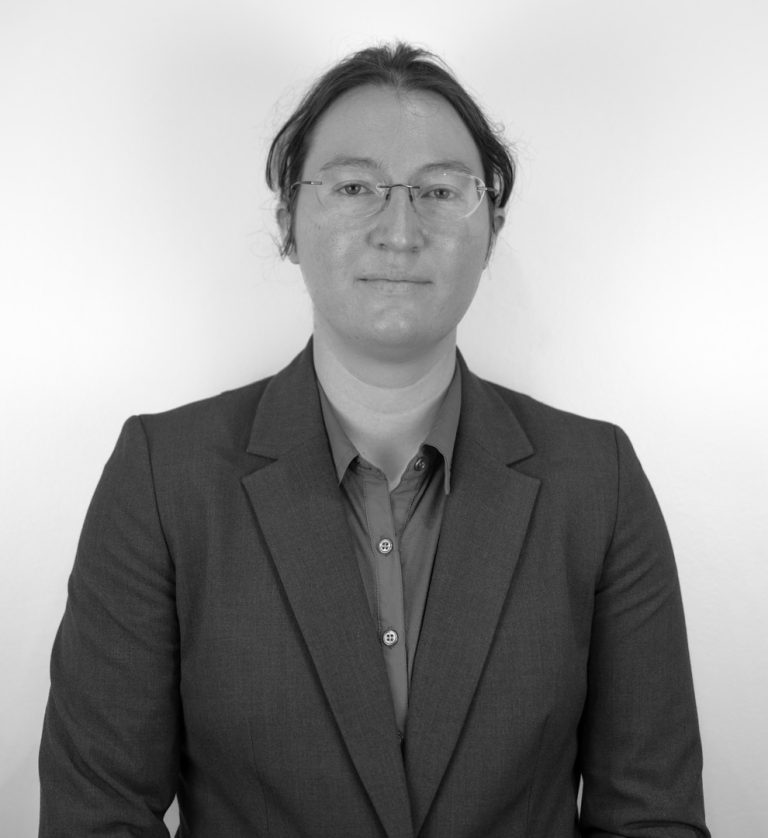Grad Slam 2025 Finalists
Grad Slam is a systemwide competition that showcases and awards the best three-minute research presentations by graduate scholars. This competition not only highlights the excellence, importance and relevance of UCI graduate scholars and their research, but it is also designed to increase graduate students’ communication skills and their capacity to effectively present their work with poise and confidence. It is an opportunity to share accomplishments with the campus, friends of UCI, the local community, and the broader public. This year’s edition of Grad Slam will be virtual, from the semifinals all the way through UC Systemwide Finals. See below to meet our 10 2025 UCI Grad Slam finalists!

2025 Top-Three Finishers
Casey Vanderlip - First Place
Catching Alzheimer’s Disease Before It Starts—With a Simple Memory Game
Alzheimer’s disease (AD), the leading cause of dementia, is a growing global crisis, with cases expected to rise dramatically in the coming decades. A major challenge in fighting AD is early detection. By the time symptoms appear, the disease has already been silently damaging the brain for years. Current diagnostic tools, such as brain scans and spinal taps, are costly, invasive, and impractical for large-scale screening. Given the millions at risk, we urgently need an affordable, accessible, and scalable solution.
Our research focuses on developing digital memory tests that can be self-administered at home to detect AD-related memory changes early. Specifically, we the ability to distinguish between similar experiences because the brain regions responsible for this ability are among the first affected in AD. To test whether a memory task could aid in early detection, we designed a cognitive test that challenges individuals to distinguish between similar experiences and evaluated it in hundreds of older adults. We found that performance on this task identified individuals with elevated AD biomarkers even before any clinical signs of cognitive impairment emerged. More importantly, it predicted who would develop symptoms within the next two years, outperforming traditional methods like invasive brain scans.
These results highlight the potential of simple, low-cost digital tests for detecting AD in its earliest stages. By making these tools widely available, we aim to identify at-risk individuals before irreversible damage occurs, paving the way for earlier interventions and better outcomes.

Sydney Prange - Second Place
Abstract
The cells in our nervous system that allow us to think, feel, and move are called neurons, and they rely on specialized cellular antennas called dendrites to receive information from the world around us. If you picture a neuron as a tree, the dendrites are all the many branches. Unfortunately, in diseases like Parkinson’s, Alzheimer’s, and Huntington’s, neurons progressively lose their dendrites in a process called neurodegeneration. This progressive loss of dendrites along with other cellular changes lead to symptoms like memory loss and mobility issues because neurons cannot properly function. Thankfully, like the branches of trees which can grow back after being trimmed, dendrites are capable of regrowth, or regeneration, following injury. In my work, I am interested in whether degenerating dendrites can be protected or regrown after they are lost in neurodegenerative disease. Excitingly, I have found that degenerating dendrites can indeed be protected by injuring just one dendrite branch. In response to the injury, the other uninjured dendrite branches are protected and sometimes able to grow new dendrites. My work suggests that activating dendrite regeneration has potential to slow or even reverse dendrite loss in neurodegenerative disease. In my current studies, I am working to identify what parts of the dendrite regeneration pathways could be targeted for a potential therapeutic, revealing new possibilities for treatment of neurodegenerative diseases.

Emily Tom - Third Place
Abstract
My research focuses on understanding how aging affects the retina, the part of the eye that is responsible for vision. As we get older, the levels of certain fatty acids, which are crucial for maintaining the structural integrity of cell membranes, decrease in the retina. This decrease can lead to visual decline during aging and increase the risk for developing conditions such as age-related macular degeneration (AMD), one of the leading causes of irreversible blindness in adults 65 years and older.
The goal of my work is to develop treatments to slow down or even reverse vision loss during aging and in people with AMD. To do this, my project investigates the role of a key enzyme, ELOVL2, which is responsible for producing these important fatty acids in the retina. The ELOVL2 gene is also one of the most robust biomarkers of aging. As we age, a specific part of the ELOVL2 gene becomes more methylated, meaning it undergoes changes that can turn the gene “on” or “off.” These changes in ELOVL2 can be used to accurately predict how old someone is, across different tissues in the body.
By understanding how ELOVL2 works and its role in age-related vision loss, my research aims to find new ways to treat or prevent conditions such as AMD and to help people maintain healthy vision as they age. Ultimately, this could lead to therapies that restore retinal health and improve quality of life for those affected by age-related eye diseases.

2025 Finalists
Tessa Chou
Abstract
Human immunodeficiency virus (HIV) remains a global health concern. 40 million people are currently living with HIV, and another 40 million have died of acquired immunodeficiency syndrome (AIDS)-related diseases such as certain cancers and diabetes. Despite major advances in medication that prevent HIV spread, saving millions of lives, inactive infected cells remain a significant barrier to developing a cure. HIV can hide in the DNA of these cells for decades, allowing it to reactivate once someone stops taking medication. Thus, a true HIV cure requires complete removal of all inactive infected cells.
Our lab studies the “kick and kill” strategy, a two-pronged approach where a drug first “kicks” HIV awake from inactivity. Medication taken at the same time ensures awakened HIV cannot spread, while the immune system recognizes and kills infected cells. The ideal drug possesses three critical traits: awakens HIV, doesn’t hurt healthy cells, and helps kill infected cells. We’ve already identified promising drugs that fulfill these criteria and are on our way to continue improving them. By doing so, we can gain a better understanding of how HIV persists while contributing to innovations in therapeutic approaches, with the hopes of ultimately achieving a more accessible cure for HIV.

Kunlei He
Abstract
Reading together remains one of the most powerful bonding and learning experiences between parents and children, yet modern digital solutions often inadvertently replace rather than support this crucial interaction. My research introduces an innovative AI-powered platform that reimagines the role of technology in early childhood reading by prioritizing and enhancing parent-child joint engagement. Unlike existing AI reading applications that often position themselves as parent substitutes, my research exemplifies a “family in the loop” approach where AI serves as a facilitator of human connection. The AI system features a simple but powerful design: as parents and children read together, the AI provides interactive questions to engage the child while also generating thoughtful discussion prompts that help parents connect story elements to their child’s daily experiences. By strengthening rather than replacing parental involvement, my research demonstrates how AI can be thoughtfully integrated into traditional reading practices while preserving and enhancing the invaluable parent-child interactions.

Doreen Hii
The 3D World We See Is “Fake” and We Want AI to See the Same
The 3D world we experience is a product of our brain’s remarkable ability to reconstruct a three-dimensional (3D) percept from the two-dimensional (2D) signals received by the retina. This feat, while effortless for humans, presents a formidable mathematical challenge. Despite the differences in individual brains, we all share a remarkably consistent 3D perception of the world. How can we build artificial intelligence (AI) models that achieve this level of shared perceptual experience?
I hypothesize that the brain makes simplifying assumptions about objects in the world when producing 3D percept, such as that objects are mirror symmetric and compact in size. By incorporating these assumptions in an artificial intelligence (AI) model, the model successfully produced human-like 3D percepts from single 2D images. Human-machine collaboration will only be seamless when we can trust that AI models perceive the 3D world in a manner that aligns with human expectations. Imagine a world where robots assist in disaster relief, AI enhances medical procedures, and self-driving cars navigate safely – this vision of the future is within reach through the development of cognitive-inspired AI.

Siwei Hu
Microtransit: More Efficient Public Transportation
Public transportation helps people get where they need to go, yet many systems fail to provide easy access to key destinations, particularly for those far from transit stops. Microtransit—an on-demand, shared mobility service—has emerged as a potential solution. However, operating microtransit is expensive, often costing transit agencies far more per trip than traditional buses or trains.
To address this challenge, we developed an agent-based simulation model that allows transit agencies to test different ways to integrate microtransit with existing bus and train networks. Our model considers factors such as fixed transit frequency, microtransit fleet size, virtual stop coverage, and operating hours, while assessing subsidy per rider, mode share, accessibility, and vehicle miles traveled.
Applying our model in San Diego County, we found that fully integrating microtransit can triple accessibility in underserved areas. A smaller fleet, higher virtual stop coverage, and operating only during peak hours can significantly improve cost-effectiveness. Our research helps transit agencies design more efficient public transportation systems.

Kathryn Jones
Abstract
Concrete is the most-used man-made material on earth, with its production second only to potable water; due to this wide use, its industry is currently responsible for a substantial 8% of global carbon emissions. Because of this, in order to reach established net zero goals, more environmentally friendly methods of concrete construction must be adopted. Concrete additive manufacturing, also known as 3D concrete printing (3DCP), is an emerging technology with the potential to reshape the construction industry by allowing structures to be built using less materials, time, and transportation than conventional manufacturing methods. However, there is a lack of knowledge concerning the environmental impacts of large-scale 3DCP structures compared to structures made conventionally. My previous work used life cycle assessment to examine the environmental feasibility, and paths towards improvement, of large-scale 3DCP structures. This study identified that while printed structures used less material, often the printable materials themselves had the highest environmental impacts. Based on these results, my current research now focuses on reducing those environmental impacts by replacing energy-intensive ingredients in printed concrete with recycled substitutions, while maintaining the printability of the modified concrete.

Spencer Matthews
Abstract
Healthspan, the number of years we live free from disease or major disability, shifts the focus from simply living longer to living better. My research provides healthspan researchers with tools that are both statistically rigorous and easy to interpret. In this talk, I introduce the Golden Health Index, a new way to measure healthspan and identify factors that contribute to a healthier life. By enabling research of data-driven treatment strategies, this work aims to improve quality of life and help more people live longer, healthier lives.

Mary Thuy Nguyen
Abstract
Substance abuse among Asian American adolescents is a growing yet often overlooked concern. Stereotypes portraying Asian Americans as the “model minority” due to perceived academic success and low levels of risky behavior can obscure the challenges faced by youth in these communities. Limited research on substance abuse within this population leaves significant gaps in understanding its prevalence and the specific barriers they encounter in accessing care. My research aims to explore the unique factors driving substance use among Asian American adolescents, identify the most significant contributors to substance abuse, and propose tailored strategies to promote prevention and recovery in the future.